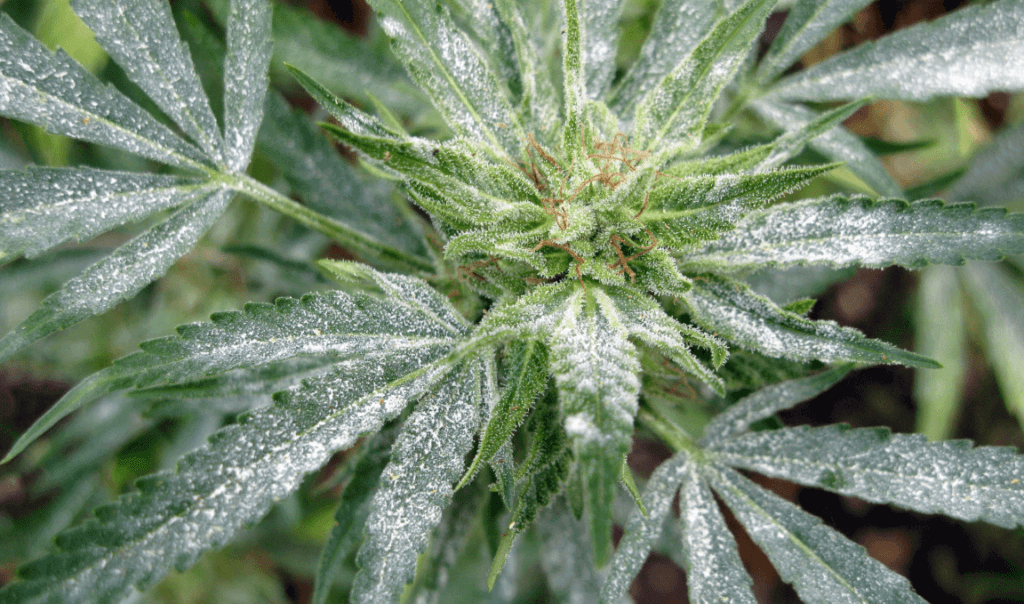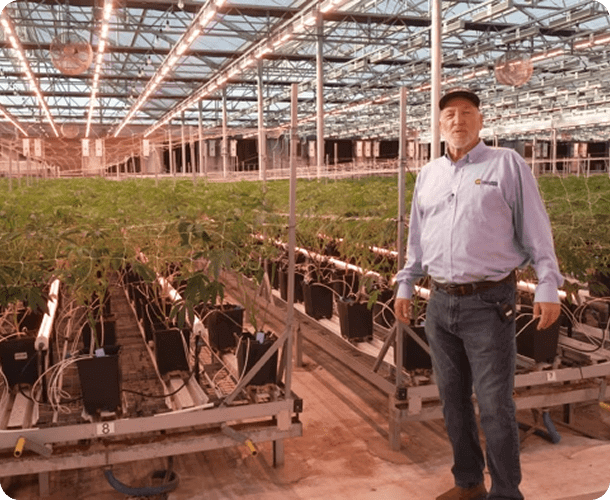A fungal infestation can be massively devastating to a dedicated grower. After putting in your best efforts to cultivate a quality product under ideal growing conditions, it can be heartbreaking to see your plants destroyed by a relentless fungus.
And for many growers, spraying their grow room with nasty fungicides doesn’t feel like the ideal option, either.
This is why many gardeners are increasingly interested in UV light as a method for controlling mold and powdery mildew. If a simple light could help you save your plants from an untimely end, wouldn’t that be the best option? You would keep toxins out of the air and save yourself the expense and heartache of unusable plants.
If you’re wondering if UVB light is a viable option for preventing a fungal attack in your grow room, stick with us. We’re going to share everything you need to know about protecting your plants from mold and how UV light can play a role.
How Do I Know if My Plants Have Mold or Mildew?
The first step towards managing your fungus problem is to make sure you’ve identified the problem correctly in the first place. Here’s how to recognize the two most common fungi growers must contend with.
Identifying Gray Mold
Known more officially as Botrytis, gray mold is an insidious infestation that may attack any part of the plant, including roots, stems, leaves, and buds. It most frequently attacks in the late flowering stage and can be identified by traits such as:
- Dried-out leaves
- Delicate brown stems
- Dried, pale gray buds containing a substance resembling cotton
Indoor, outdoor, and greenhouse grows are all vulnerable to Botrytis. If the problem is not promptly discovered and eliminated, the plant is entirely useless. Any part of the plant that has been infected cannot be consumed, as there is a high risk of lung infection linked to ingesting gray mold.
Identifying Powdery Mildew
Also known as White Mold or Oidium, powdery mildew has been on the rise over the past several years. Like gray mold, powdery mildew can infest any crop, no matter where it is grown.
Unlike Botrytis, however, powdery mildew is fairly predictable when it comes to where it develops on the plant and how it spreads. This fungal infection appears first on the leaves, then spreads to the petioles, stems, and buds in that order. In the final phase, white mold destroys resin and renders the plant unsafe to consume, as its spores are now part of the product and hazardous to the health of the consumer.
The first telltale sign of a powdery mildew attack is exactly what it sounds like: a white, powdery substance growing on the leaves of the plant. White mold is often mistaken for dust in the early stages, so be vigilant and make sure you don’t dismiss a fungal infection as dust.
How Mold and Powdery Mildew Spread
Both gray and white mold spread through airborne spores, which is what makes these fungi so distressing for growers. Spores travel swiftly through HVAC systems, and humid growing conditions create a nurturing environment for both gray mold and powdery mildew.
If you have a large grow operation with dozens or hundreds of plants in close proximity to one another, it is imperative that any fungal infection is immediately discovered and addressed. Also be sure you can isolate the affected plant to an area where it is unlikely to spread infection to other crops.
How UV Light Can Help
UV light is best at breaking down the DNA of mildew and mold in early stages of growth. It targets mold spores and young fungus, which means your best bet for using UVB light to control these organisms is to catch the problem early. It is possible for UV light to help manage an older mold or mildew problem, but in such a situation, you need the more mature fungus to die off through other means.
It is important to note, however, that killing off a powdery mildew problem with UV light involves a bit more strategy than merely blasting the problem with lights. After all, the sun has been coming at powdery mildew with UVB rays for thousands of years. And given that powdery mildew is still around, it’s clear enough that the fungus has evolved some solid defense mechanisms.
In fact, Cornell AgriTech has found that powdery mildew employs an active biochemical repair mechanism that enables the organism to survive UV blasts from the sun. But the fungus does have an Achilles’ Heel. This mechanism shuts down at night, making later hours the perfect time to launch a UVB attack.
How to Prevent Fungal Growth On Your Plants
Your best bet as a grower is to take measures now to reduce your risk of developing a mold or mildew infestation later.
Growers who use UVB lights regularly as part of their grow lighting system are at an advantage, as UV light attacks and discourages mold and mildew growth in the first place.
It’s also a good idea to take additional measures such as:
- Watering plants in the morning, as moisture is likely to evaporate during the day. Watering in the evening comes with a higher risk of humidity and condensation in the grow room.
- Carefully manage the humidity of your grow room so there is never more moisture in the air than the level your plants require.
- Install a state-of-the-art system for managing air filtration and circulation.
- Avoid crowding your crops. Give each plant a little “breathing room.”
- If a plant is attacked by a fungus, promptly isolate it and—if it can be salvaged—remove the infested areas. Then, thoroughly clean the grow space, pot, and any equipment that may have come into contact with the plant.
When combined with UVB lighting, these measures can help ensure a healthy crop without the use of toxic fungicides.
If you’re considering adding a UVB light to your grow operation, we recommend taking a look at the SolarSystem UVB light. In addition to combating fungal infestations, this unit also promotes resin development and increased potency. The SolarSystem UVB can also be mounted on our variable spectrum SolarSystem LED grow lights to create one powerhouse unit that allows you to manage and control plant development at every stage of the growth cycle.
If you have any questions, please reach out at any time. We hate to see a great product go to waste, so if there’s anything we can do to help you prevent a fungal attack, let us know.





